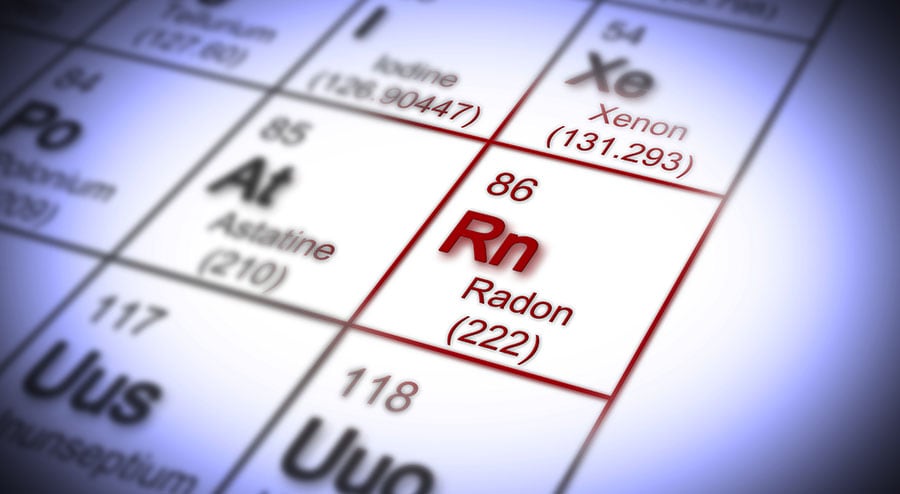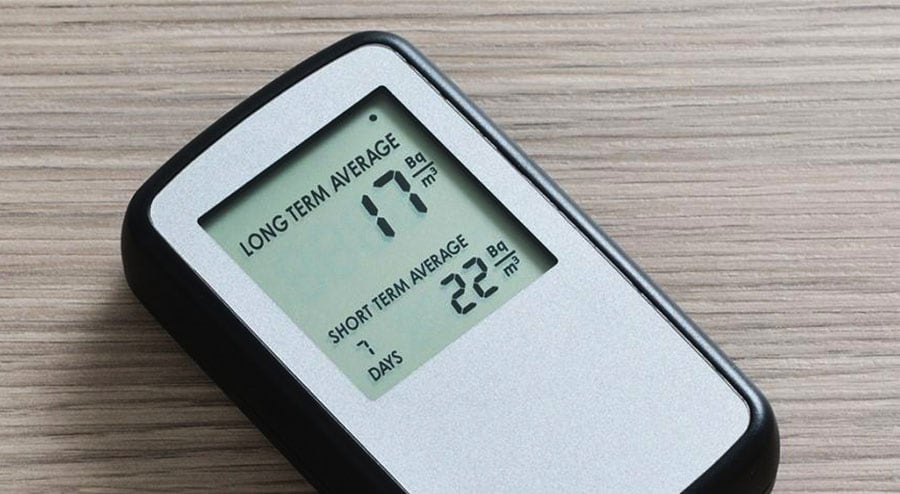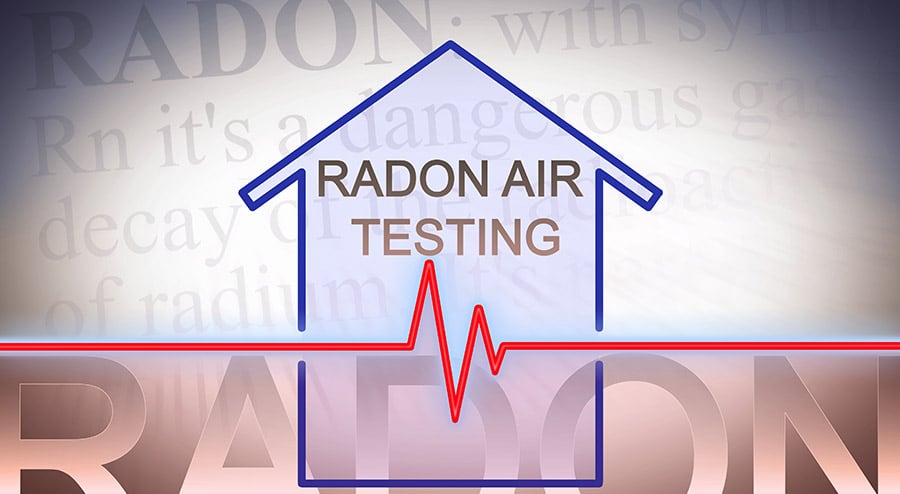There are many things that can have an impact on our health, well-being, and overall quality of life inside the home. One of the key ones is the air quality, which can become polluted due to contaminants from outside, dust, bacteria, pet dander, smoke, and other undesirable elements. However, it is not just these types of pollutants that we have to worry about when it comes to air inside our homes. We also need to be mindful about more serious issues such as gases that can have a serious impact on health but that cannot be openly detected because there is no odor, taste, or color to them. One such gas that can have deadly consequences is carbon monoxide. The other is a gas known as radon.
One of the worrying things that you need to know about radon is that, according to the Environmental Protection Agency, it is the second leading cause of lung cancer in the country. Every year, it is thought that more than 20,000 people die from conditions related to lung cancer as a result of radon contamination. Attacks by radon generally occur inside the home, where this silent killer is able to penetrate the air and affect unsuspecting people. There are no immediate signs or health issues that come from breathing in this gas, which makes it all the more difficult for people to know they have been affected by radon until it is too late. According to the EPA, amongst every one thousand non-smokers that are exposed to radon at twice the recommended action level 15, will contract lung cancer. For those who do smoke, the figure is much higher and stands at 120 in every one thousand people.
Where Does Radon Come From and What Is It?

The first thing to know about radon is that it is highly radioactive and dangerous. While it is not generated in the home in the same way as carbon monoxide, it can easily get into the home through cracks and gaps. It then pollutes the air quality and creates a hazard within your own home.
This gas is created as a result of uranium breaking down inside the earth. Once generated, it can slip into homes and buildings in a variety of different ways. This includes through cracks in suspended and solid floors, construction joints, wall cracks, wall cavities, gaps around piping, and even via the water supply. As you can see, there are various ways in which radon can enter the home. However, because it has no taste, color, or odor, you won’t realize that your indoor air has been polluted by this gas unless you have something in place that can alert you to the presence of the radioactive gas.
The one thing that you have to bear in mind is that, once this gas enters the building, it then becomes trapped and this increases its concentration levels. Once a certain level of exposure is reached, it can pose a danger to those in the building. The Environment Protection Agency places the action level for this gas at 4 pCi/L. If it reaches or exceeds this level then you need to take action to get the exposure level back down to below the action point. You also need to remember that if the radon gets into your home through the water supply, it poses an additional risk. This is because it can be both inhaled and ingested when it the water. In fact, figures show that around 168 cancer-related deaths per year are caused as a result of radon in drinking water.
Using A Radon Gas Detector To Monitor The Quality Of Air In Your Home
The inability to taste, smell, or see radon gas means that we are at risk of breathing in or even ingesting the radioactive gas without realizing it. However, making sure you have a system in place to help identify the presence of radon can prove invaluable. This is where radon detectors and radon test kits come into the picture, as these are specially designed to be able to identify the presence of the gas and to alert you to its presence. You can then look at taking any necessary remediation steps based on the level of radon in the air.
Choosing A Radon Air Detection Solution

One of the things you will need to do is make sure you buy the best radon testing kit for your home, and there are a number of different ones that you can choose from. You should make sure you go for a high-quality kit from a reputable manufacturer for total peace of mind and higher levels of protection. Some of the radon gas detectors that are available on the market include:
- Electret Ion Detector: These detectors come with a Teflon disk that is electrostatically charged. They work by measuring the voltage reduction on the surface of the disk, which is caused by the radon. This then enables the concentration of the gas to be worked out. You should bear in mind that this type of test can be expensive and you do need to have the training to use it.
- Alpha Track Detector: This is one of the more commonly used types of detector and they operate through a small plastic sheet that is integrated into them. This plastic is exposed for a three-month period and the alpha articles mark the plastic when they hit it. The marks are then treated and analyzed so that the concentration of radon can be worked out.
- Charcoal Canisters: These are short-term detectors that are used for a period of between two and seven days. They contain a small amount of activated charcoal and the radon is absorbed into this. The levels can then be measured by using a sodium iodide detector.
Remember, there are both short-term and long-term radon detection solutions that can be used in the home. With the short-term methods, testing is carried out in a period of up to 90 days. This means that the results will be available for more quickly and testing can be done in as little as two days. However, the downside is that it can still take some time to get the results back once they are sent off. On the upside, these kits tend to be cheaper than other radon detection solutions.
With long-term radon detection solutions, the testing is carried out over a period of more than 90 days. The process could take between three months and a year, based on the detection system that you choose. The main benefit is that you can get more accurate readings from this method because the testing is carried out over a longer period. However, because they are long-term detectors, you also have to consider the fact that it will take much longer to get results than with a short-term radon detection system.
You can also get digital radon detectors, which offer far more flexibility and greater ease for households as they are simple to use. These are continuous detectors and offer a range of benefits compared to the other systems. Some of the key benefits that you can look forward to when you use a digital radon detector for your home include:
- A flexible solution that is simple to use
- Suitable for both short- and long-term testing
- Lasts for a long time
- Provide high levels of accuracy with results
- Provides a quick response time and results
- It works continuously to monitor radon levels
While the price of these detectors may be higher than options such as the charcoal canister ones, many people find that it is well worth the cost for the convenience, ease, flexibility, and accuracy that they can offer.
Added Protection For Your Home: What To Consider

In short, having a radon detector will provide you with additional protection for your home and for everyone in it. The key point to remember, as mentioned earlier, is that you cannot detect radon through smell, taste, or color because it has none of these things. However, with a detector in the home, you can ensure that the air quality is safe and that radon does not move into what the EPA classes as dangerous levels.
These detectors also provide an inexpensive means of providing protection and improving air quality. Of course, some solutions are more expensive than others but you need to make sure you take a number of factors into consideration rather than just price alone. Some of the things that you should consider when making your choice include:
- Quality and reputation of the manufacturer
- Type of radon detector (long-term, short-term, continuous)
- Ease of use
- Convenience and flexibility
- Reviews from other consumers
By taking all of these things into consideration, you will be able to make a more informed decision with regards to the right radon detection system for your home.

